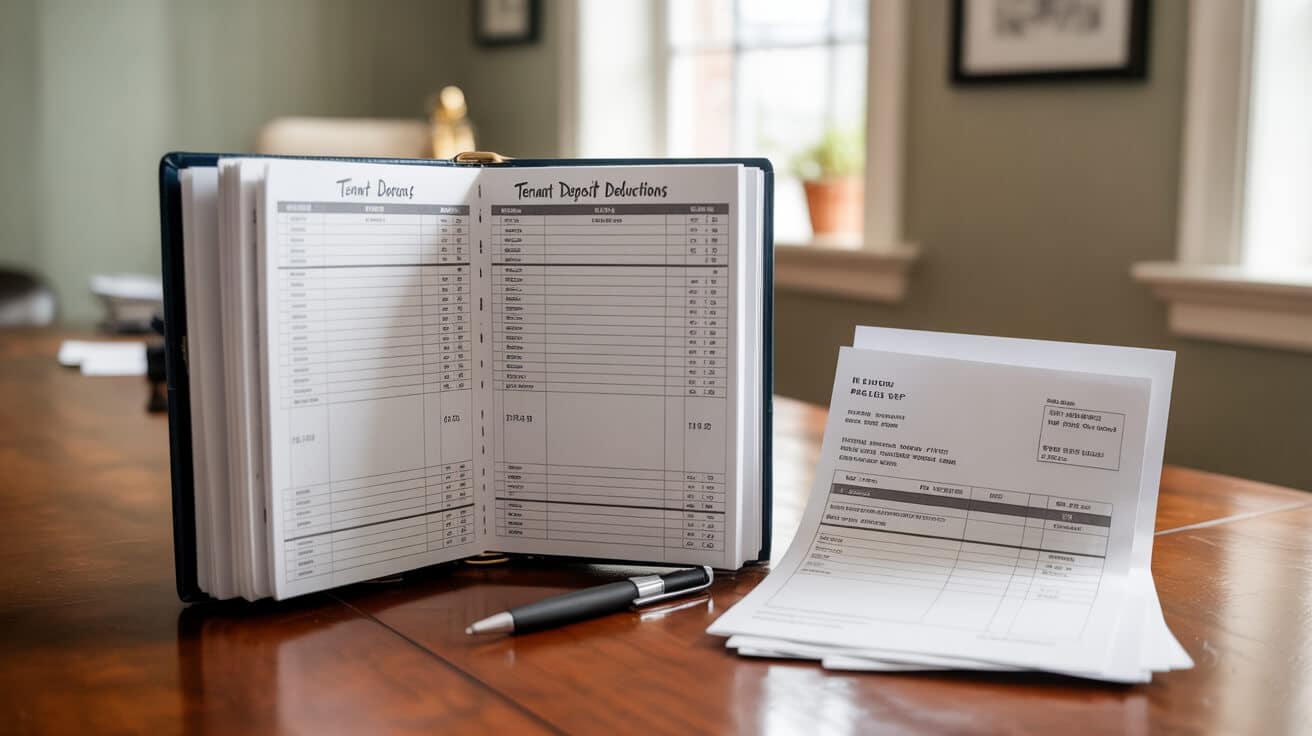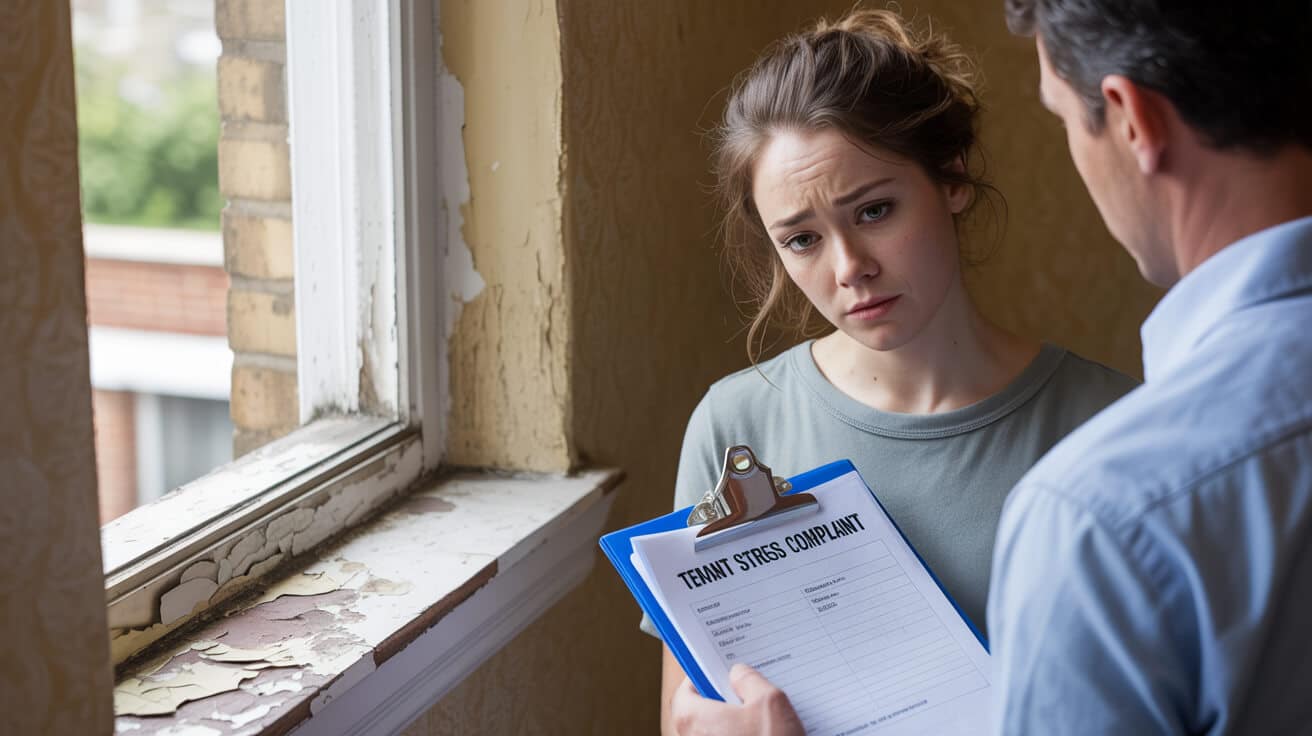 A Complete Compliance Checklist For Building Regs And Awaab’S Law
A Complete Compliance Checklist For Building Regs And Awaab’S Law

Has Awaab’s Law Changed What “Compliant” Really Means for Modern Landlords?
You can still get caught out even if you care, respond quickly, and run a tidy ship. The difference is that Awaab’s Law—the UK’s defining update to housing safety—means “intent to fix” is no longer enough. Today, you need a provable trail for every hazard—damp, mould, fire, carbon monoxide, safety systems—linking complaints to action, repairs to evidence, and every safety certification to a live digital log. If a council inspector comes knocking or a tenant’s lawyer emails, only a “show me now” record stands between you and fines, citations, or losing management rights.
The landlord who expects slack because they always try their best is now at the same risk as the one who ignores compliance outright.
Gone are the days of verbal tenant updates and afterthought paperwork. Audit-readiness isn’t just for the largest landlords anymore—private owners and agents get the same scrutiny, and gaps hit both your income and your reputation. If you’re relying on memory, hope, or backdated logs, you’re gambling with your business in a zero-tolerance climate. The smart move is to treat compliance as a core asset, not a regulatory nuisance.
Why Paperwork and Process Are Now as Vital as Repairs
The stark shift is this: if it isn’t documented, it didn’t happen in the eyes of the law. Regulators don’t care if you meant well or worked all night; fines and restrictions fall on those without hard proof—time-stamped records, photographs, signed-off fixes, and bulletproof digital chains.
What that means: You need “audit tracing” at the centre of your property management routine. Your systems, not your intentions, become your safety net.
- Digital logs for every complaint and job, no exceptions
- Photos before and after any repair or inspection
- Certificates filed and linked to the right property and date
- Written tenant updates—stored, not lost in email
Letting things slip, missing a certificate, or relying on hand-written notes used to mean annoyance and a warning; now it means financial loss and sometimes the removal of your right to self-manage properties at all.
Are You Ready to Prove Compliance—Every Time, to Anyone?

Intent is irrelevant—delivery is everything, and only record-backed proof will do. If you want to meet the new standards (and sleep at night), you need these protocols operational, always, across every property:
Required Actions Landlords Must Prove
- Instant hazard logs: for tenant complaints—same day in a digital or validated form, never later
- Fast response targets: —24h for life/hazard (structural, fire, CO), 10 days for verified health issues like mould
- Written records of every tenant communication: Use email, tenant portals, or letter with photo of posting—entry and time always logged
- Evidence chain of each repair: Before/after photos, work orders, proof of technician’s qualification, and digital sign-offs
- Renewable safety checks: Annual gas, five-year EICR (electrics), and alarm tests for every new tenancy or at required intervals
All enforcement starts with missing logs, not bad intent. A perfect record is your only defence. *(Gov.uk Housing Guidance, 2024)*
Fail at any of these, and you’re open to fines, ombudsman orders, and—if social or large-scale—public management intervention. The grey zone where “I’ll sort it soon” sufficed is gone for good.
Why Auditable Trails Outrank Trust or Verbal Deals
Awaab’s Law means that a landlord’s intentions are secondary—the whole system is built around accountability and traceability. Try to defend yourself without clear records, and you’ll find even the most understanding judge or inspector looking for digital proof, not stories.
- If a problem is logged but not actioned, you’re at fault.
- If a repair is done but not photographed or signed, it “never happened.”
- If you can’t trace which certificates are up to date, assume non-compliance.
Landlords who keep digital logs and archive every interaction rarely lose a dispute, even when tenants complain or things go wrong. *(Wright Hassall, 2024)*
How Can Landlords (and Agents) Hardwire Compliance into Daily Ops?

It’s overwhelming—so many ways a task can slip or a certificate go overdue. But for anyone serious about property, survival now means systematising compliance into every day, not every crisis. Here’s how best-in-class operators lock in safety and legal cover using tight processes and digital logs:
Stepwise Process for Awaab’s Law Compliance
1. Log the Hazard Instantly
- Every report, even if it seems minor, goes immediately into your digital system with time, date, and property key.
- Tag as “emergency” or “routine”—never wait to decide.
2. Assign Qualified, Documented Inspection
- Only send accredited professionals for risk work (damp, electrics, gas, structural).
- Capture and archive inspection photos and digital findings—no loose ends.
3. Send Written Tenant Updates—Fast
- Send findings and next steps in writing within 3 days, not as a phone call.
- Keep these emails/letters in your system, time-stamped and accessible.
4. Execute Repairs to a Documented Standard
- Emergency: Done safely within 24 hours, urgent within 10 days—non-negotiable.
- Document every stage: before/after images, part codes, signed work records, tenant confirm.
5. Store Certification and Set Automated Reminders
- Centralise gas, EICR, smoke & CO certificates and update for every new tenancy or expiry.
- Use calendar tools (property management apps are best) so renewal is never missed.
6. Run Quarterly (or Monthly) Self-Audits
- Review every property’s file: certificate expiry, missing logs, tenant response times.
- Pre-emptively fix gaps before any spot check or dispute.
This isn’t busywork; it’s your legal moat. Owners using these steps reduce insurance issues, pass HHSRS and ombudsman checks, and rarely see fines or management restrictions, no matter how many units in their portfolio.
The few hours a month spent auditing beats weeks fixing crises after the fact.
What Digital Evidence Is Needed to Survive Modern Compliance Audits?

Hand-written logs and post-it notes don’t cut it anymore. Digital records make your compliance “searchable”—and therefore usable in seconds for any complaint, audit, or claim. This is the competitive edge for owners who don’t want to live in fear of the next complaint or inspector.
The Power of Digital Logs
- Complaint logs and job tickets: Every record, with date and time, searchable by property, tenant, or work type.
- Photo and video evidence: Embedded in each repair entry for pre/post comparison.
- Certification vault: Gas, EICR, alarm, and fire checks, cross-referenced to dates and properties.
- Automated reminders: So annual and 5-yearly checks don’t slip through the cracks.
Quarterly spot-check those records and you’ll spot (and resolve) vulnerabilities before a regulator or tenant does.
Almost all failures in audit are due to missing, late, or improvised records—systems, not intentions, win every case. *(Shelter, 2024)*
Why Record Accuracy Outranks Speed Alone
The smarter landlords slow down just enough to guarantee thoroughness. If you have to fix twice to get the right log, do it. The time lost on record-keeping now is nothing compared to business and reputation loss later.
Which Safety and Compliance Checks Are Absolutely Mandatory Now?

Skip any core check and the chain breaks—meaning insurance may be invalid, the council can take over, or fines escalate fast (often before you even know there’s a problem). Get these checks locked, logged, and renewed on a schedule, and you’re ahead of most competitors.
| Safety/Compliance Check | Who Must Complete | Deadline / Frequency |
|---|---|---|
| Gas Safety Certificate | Registered Gas Engineer | Every 12 months |
| EICR (Electrical Safety) | Qualified Electrician | Every 5 years |
| Smoke & CO Alarm Testing | Competent Installer | New tenancy / renewal |
| Fire Doors & Exits | Trained Inspector | Annually |
Automate all deadlines and archive every certificate, so you respond with proof—not panic—at the first query. Smart systems tie every item to property and tenancy for fast retrieval.
Landlords who miss a certificate date don’t just risk fines—they sometimes lose management rights for years at a time.
When a new law hits, assume the strictest requirement and document accordingly. Over-preparation always outweighs the risk of a slip.
How Do You Make Compliance Automatic for You and Your Team—Not a Memory Test?

This is where most owners stumble; it’s easy for a single staff member or contractor to let something slip. The smartest solution: write compliance into your training and checklists, not just your onboarding packet.
- Log every training session, new checklist, and regulation change for all staff, not just managers—signatures are best.
- Direct access to updated checklists on mobile or paper for anyone delivering services.
- Mandate annual (or more frequent) re-training to keep everyone sharp—spot checks by auditors or ombudsmen frequently test staff compliance, not just paperwork.
Awaab’s Law now expects a systemic approach, not a “do your best” effort, and missing training logs are a red flag for the next inspection.
A system breach by the most junior member can put your whole property at risk.
The Ripple Effect of Induction Training and Ongoing Refreshers
Staff turnover, contractor use, and portfolio growth all introduce risk. Wise owners turn every change, new regulation, or failed audit in the sector into a live update—distributed, signed off, and logged for every team member.
How Should You Log and Structure Tenant Interactions—Not Just the Repairs?

This is the overlooked part: Awaab’s Law shifted the burden of proof not just to repairs, but to how you handle tenant communication. Modern compliance expects landlords to archive every message or complaint in easy-to-produce digital form, so every interaction is protected.
- Clearly distinguish hazard/emergency versus standard repair for every report, and show the differentiation in your system.
- Provide tenants at move-in and renewal with clear reporting instructions and escalation paths (ideally hard copy and digital—think QR codes).
- Every message, action, or escalation must be tied to the property and incident—no lost emails, no sticky notes.
- Include links to ombudsman guidance and tenant charities (like Shelter or Citizens Advice) in move-in packs and compliance folders.
Get this automated and you stop complaints escalating. Most disputes arise not from the issue itself but uncertainty about communication—and once a pattern emerges, it’s almost impossible to argue yours is the “one-off” good landlord.
Documenting more than the law requires is the fastest way to stay off regulator watchlists.
Why Relying on Just Yourself Isn’t Scalable Anymore—The Value of a Multi-Trade Compliance Partner

You don’t have to do all this alone—most owners who survive audits and sleep easy use a compliance partner who lives and breathes this law. A reliable multi-trade maintenance provider takes the hassle of process, record-keeping, and repairs out of your daily inbox—and brings you system bullets that you alone can’t match.
- Full-spectrum audits: Find vulnerabilities before the council or ombudsman does.
- One-touch compliance: Repairs, documentation, and digital logs—no paper chase or procedural confusion.
- Staff and contractor training: Get the induction, refresher, and digital certification process done for your team, not just you.
- Repairs and certificates hardwired together: No more mismatched suppliers or expiry gaps.
Clients who use All Services 4U consistently pass spot audits, avoid penalty triggers, and—most importantly—keep their tenants demonstrably safer, as reflected in positive reviews and negligible enforcement actions.
When compliance becomes part of your ecosystem, not just a checklist, risk and stress drop faster than you might believe.
Secure Your Compliance—For Good—with All Services 4U
You’ve put too much into your properties to lose them to paperwork mistakes or system gaps. Compliance under Awaab’s Law isn’t a suggestion—it’s an asset you build and defend.
All Services 4U streamlines compliance so you don’t gamble with your business or your tenants’ safety:
- Live audits and instant gap detection for every property—before you get caught out.
- Emergency and preventive repair, done right, every time, by certified pros.
- Digital record and certificate archiving, accessible instantly at any audit or inspection.
- Ongoing checklists, live legal bulletins, induction/refresher training, and full team support—all included, audited, and accessible.
Don’t wait for the next warning letter or tenant escalation. Book your compliance gap review with All Services 4U now—protect your income, defend your reputation, and keep every tenant safer under the new law.
Frequently Asked Questions
Why do the 2025 building regulation changes mean landlords must overhaul their compliance routines?
The 2025 reforms triggered by Awaab’s Law force every UK residential landlord to completely re-think property risk management—hazards like damp, mould, fire, gas, or electrics are no longer issues you can “handle as they crop up.” The law now requires immaculate digital records, response clocks that start the instant a tenant complaint arrives, and proof that every stage of intervention follows a legal script. Landlords must show not just when—down to the hour—they responded to a leak or unsafe socket, but also demonstrate routine evidence trails for all repairs, checks, and tenant communications. Good intentions don’t cut it: a missed entry or late follow-up is now a compliance breach, even if the fix was done.
What does this actually mean on the ground?
- All landlords—social, private, leasehold—face strict response and logging deadlines.:
- Emergency hazards (like dangerous electrics or water leaks) demand a first fix or full risk assessment within 24 hours, no exceptions. Less urgent repairs (peeling paint, minor damp) start a separate 10-working-day clock.
- Tenants must be notified with a written, date-stamped update within three working days of any report. Informal calls or texts? Not evidence.
- Regulators and insurers may audit digital logs randomly: if your systems can’t surface certificates, incident logs, or repair records in seconds, you’re at risk.
- The compliance threshold has moved: what was “optional good practice” is now required. Old spreadsheets, verbal handovers, or paper binders are obsolete.
A digital trail isn’t optional now—it’s your ticket to legal peace of mind, audit resilience, and asset value in any market.
How does automated digital evidence prevent fines and legal disputes for landlords?
Automated digital records shield you from regulator penalties and tenant claims by making every incident, inspection, repair, and notification instantly provable. Instead of relying on staff memory, handwritten notes, or scattered emails, a centralised digital system time-stamps every action and compiles a chain of evidence that stands up to government investigators, insurers, and complaint ombudsmen. An “audit vault” approach is the new gold standard for property management—because in a dispute, the question is no longer “did you try?” but “can you prove exactly what you did, when, and for whom?”
What makes a record audit-proof?
- Each incident generates a time-stamped log: Location, complaint type, tenant details, and initial risk triage.
- Photos, certificates, and correspondence are attached in real time: Inspector notes, contractor signoffs, and tenant communications are instantly linked in one file.
- Automated reminders for safety inspections and recurring deadlines: Landlords receive push alerts for annual gas checks, EICR tests, and more.
- Tenants see written, date-stamped updates: Any delay or change of plan is communicated via PDF email or official portal, not WhatsApp or text.
- All logs are searchable and traceable: At any moment, you (and, if needed, a regulator) can surface evidence for every step taken on every property.
How do digital logs strengthen your defence?
When challenged, compliance is now measured in seconds—bring up the timeline and you’re protected; fumble for proof and liability jumps. In real legal disputes, those who produce robust, accessible evidence typically see cases dropped or resolved in their favour.
Which recordkeeping routines guarantee landlords pass spot inspections under 2025 reforms?
Passing a random inspection is about routine, not luck. You need modular, automated processes that log every new incident, schedule every required check, track staff training and tenant comms, and update digital archives in real-time. If your systems route every piece of compliance evidence to a central “vault,” you’ll pass audits before they even start—because proof is always just a click away.
Daily workflows that eliminate risk
- New hazards logged instantly: Each report—be it a wall stain, loose socket, or alarm issue—gets a digital entry, location, timestamp.
- Automatic triage: A dashboard alerts staff to emergencies (fix in 24 hours) versus routine repairs (resolve in 10 days).
- Photo and document upload at every step: Before/after images, inspection reports, tenant notices all filed to the correct property log.
- Quarterly internal reviews: Gaps, late entries, or missed certificates trigger alerts well before a regulator notices.
- Archived tenant communications: No “back and forth” lost to voice calls or unlogged texts: only written notices count.
- Annual/5-yearly safety checks: Reminders for CP12, EICR, and alarm testing are systemised, not ad hoc.
Why are these routines non-negotiable?
Failing a spot audit is never about one big mistake—it’s cumulative: a missed gas certificate here, an unlogged email there. Passing comes from relentless, digital consistency.
How can property managers and landlords ensure staff and tenants don’t become compliance weak links?
A property manager’s chain is only as strong as its weakest process. Staff need digital training logs, up-to-date process reminders, and real-world knowledge checks; tenants need written welcome packs that spell out what—and how—to report. Onboarding, annual refreshers, and “toolbox talks” with digital sign-off eliminate oral gaps and reduce human error, even at scale.
Raising everyone’s baseline
- Mandatory digital staff sign-off for major updates: Every regulation, process, and equipment change is acknowledged via digital dashboard—not hand-waved in a meeting.
- Mobile-first checklists for all routine and emergency jobs: No task is left to memory; step-by-step mobile templates ensure nothing’s missed.
- Real-time communication with tenants: Auto-generated emails, PDFs, and notifications set clear expectations and confirm compliant responses.
- Ongoing documentation of role training, refresher completions, and incident debriefs: Every action, from a new hire’s first walkthrough to a post-leak contractor assessment, gets archived.
What happens if you skip this?
Vague training, unlabeled photos, or informal messages become fatal weak points in disputes or audits. Consistency—and reliance on a professional, digital-first partner—turns risk into resilience.
What value do professional multi-trade partners like All Services 4U add to digital compliance?
Multi-trade partners cut through admin clutter, shield you from deadline gaps, and give you audit-ready confidence at every turn. All Services 4U delivers not only end-to-end record management, but ongoing compliance check-ins, supply chain QA, and precision in every service visit. It’s an accelerator: you take your hands off daily compliance routine while raising your legal defence standard—and operational reputation—at the same time.
Why does outsourcing compliance work so well?
- Scheduled audits and checklists catch mistakes early: Digital audits surface risks before your next official inspection.
- Instant log access for every job, certificate, and comm: One vault—no more searching through emails, binders, or WhatsApp threads.
- Legal change alerts and automatic process updates: No more betting you’ve “heard about” the latest regulation.
- 24/7 tenant and staff support: Every action is recorded, every stakeholder empowered to update and escalate issues as they arise.
- Peace of mind: With tight response deadlines, let the pros keep your records, so you can focus on growing your property footprint.
Compliance is no longer just about protecting buildings—it’s about guarding your time, your reputation, and your portfolio’s resilience.
How do the new standards increase asset value and reduce operational anxiety for property owners?
When every log, certificate, photo, and tenant update is available at a click, assets gain documented value—and operational drama disappears. Digital audit trails let you respond to tenant claims, regulator questions, and letting agent requirements without hesitation, adding both liquidity and desirability to your property portfolio. Compliance transforms from box-ticking stress to a badge of professionalism buyers, tenants, and insurers seek.
Proof-backed assets speak for themselves
- Properties with digital compliance history rent and sell for more: Buyers and renters are reassured by evidence of safe, well-kept environments.
- Transparent records reduce disputes and turnaround time: Faster deposit returns, fewer rejection delays, less time negotiating over “he said, she said.”
- Lower insurance and repair costs: Providers reward organised, risk-limiting landlords with better rates and faster claims.
- Easier onboarding and compliance for new staff or owners: You hand over a living archive, not just a folder of outdated scans.
Ready to close the door on uncertainty? All Services 4U removes stress from the compliance equation, so your properties remain valuable, protected, and ready for anything.



